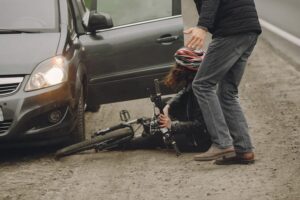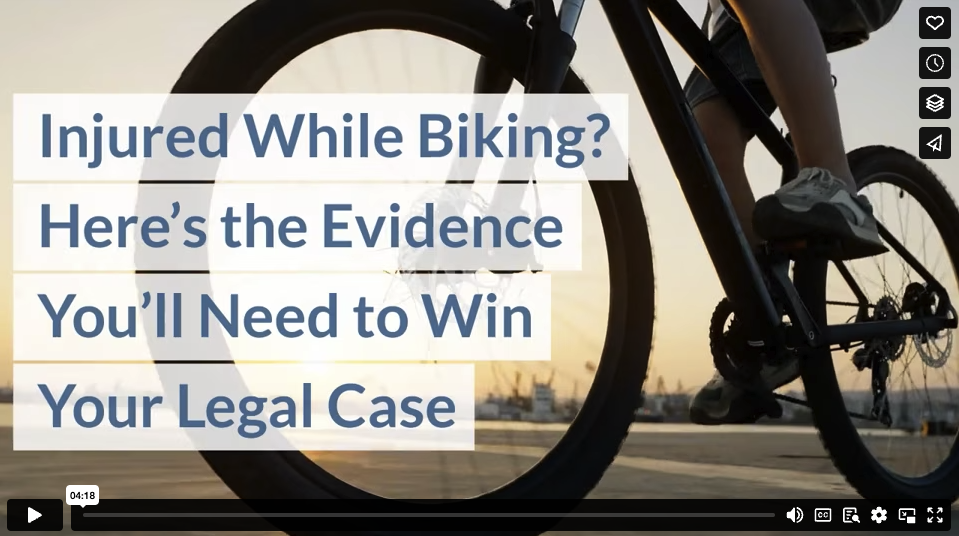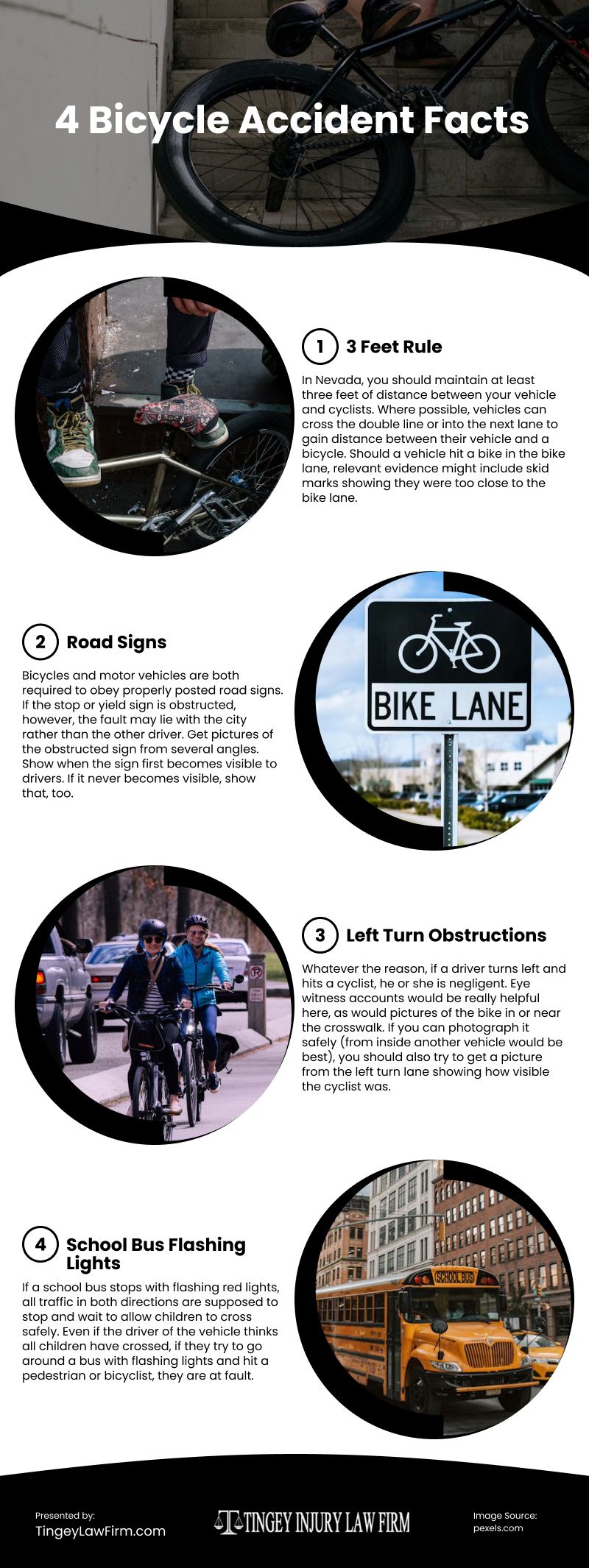Riding a bicycle is one of the most eco-friendly, healthy, and economical choices commuters and hobbyists can make. Unfortunately, cyclists are exposed to more danger because there’s nothing between them and larger vehicles. In the event of an accident it is essential to collect evidence.
So what do you need to collect and why?

(prostooleh/Freepik)
Why Evidence Matters So Much
Not everyone will be honest and admit to fault in a bike vs. motor vehicle accident. If the at-fault party denies their actions, you’ll need to show evidence they were negligent in order to receive just compensation for your injuries. Remember, evidence, not emotions, wins personal injury cases. Your Las Vegas bike accident injury lawyer can help you gather evidence and may suggest evidence not included in this article.
What Types Of Evidence Do You Need?
Understanding Nevada’s bicycle laws helps you know what evidence you’ll need in order to prove that the other party broke the law. Here are some common scenarios and the rules that surround them. Examining scenarios will help you understand the type of evidence you need for specific cases:
3 Feet Rule
In Nevada, you should maintain at least three feet of distance between your vehicle and cyclists. Where possible, vehicles can cross the double line or into the next lane to gain distance between their vehicle and a bicycle.
Should a vehicle hit a bike in the bike lane, relevant evidence might include skid marks showing they were too close to the bike lane. Skid marks could also show that they tried to go around the bike but weren’t paying attention to oncoming traffic, then over-corrected and swerved back into their lane.
Road Signs
Bicycles and motor vehicles are both required to obey properly posted road signs. If a car blows a stop or yield sign, for example, get pictures of the road signs and skid marks showing they tried to stop after crossing the line.
If the stop or yield sign is obstructed, however, the fault may lie with the city rather than the other driver. Get pictures of the obstructed sign from several angles. Show when the sign first becomes visible to drivers. If it never becomes visible, show that, too.
Left Turn Obstructions
When a vehicle turns left, the A-pillar (frame around the windshield) can obstruct the view of the crosswalk. This is especially true of larger SUVs and trucks. A bike or pedestrian in the crosswalk has the right of way, but the motorist may forget to check the blind spots. They may be distracted as they time their turn to avoid oncoming traffic, or visibility may be low due to weather.
Whatever the reason, if a driver turns left and hits a cyclist, he or she is negligent. Eye witness accounts would be really helpful here, as would pictures of the bike in or near the crosswalk. If you can photograph it safely (from inside another vehicle would be best), you should also try to get a picture from the left turn lane showing how visible the cyclist was.
School Bus Flashing Lights
If a school bus stops with flashing red lights, all traffic in both directions are supposed to stop and wait to allow children to cross safely. That location becomes an impromptu crosswalk no matter where the bus stops on the street.
Especially in a school zone, when a bus stops traffic, another child riding a bike may also use the supposed safety provided by the bus to cross the road. Even if the driver of the vehicle thinks all children have crossed, if they try to go around a bus with flashing lights and hit a pedestrian or bicyclist, they are at fault.
Try to get testimony from the bus driver stating their red lights were flashing at the time of the accident. You should also get pictures of the bus and street.
The scenarios provide some general guidance, but you should consult a Las Vegas traffic accident attorney for expert help. They will be familiar with all local vehicle and bicycle laws and can help you gather evidence for your case.
More Pointers:
In addition to law-specific proof that the driver was negligent in the accident, do your best to collect the following at every accident scene:
- Pictures of all injuries
- Pictures of both the bike and vehicle from all sides
- Pictures of any other property damage
- Pictures of the scene of the accident from all four directions
- Police reports
- Hospital, physical therapy,and medical equipment bills
- Proof of lost wages (these could be wages lost by the accident victim or a spouse or guardian who cares for the victim)
- A thorough account of all the details surrounding the accident (write it as soon as possible after the accident as memories can fade quickly)
- Name, address, and contact information for all involved parties, including witnesses
- Insurance information from the driver of the motor vehicle.
The right evidence can make or break your personal injury claim. If you’re unsure of what you need, contact a bike accident attorney in Las Vegas as soon as possible.
Infographic
Riding a bicycle is a healthy and eco-friendly choice, but cyclists face vulnerability to accidents. To gather crucial evidence in case of mishaps, understanding Nevada’s bicycle laws is essential. Read on to learn some common scenarios and corresponding laws that can help you know what type of evidence you’ll need for specific cases in this infographic.
Video


